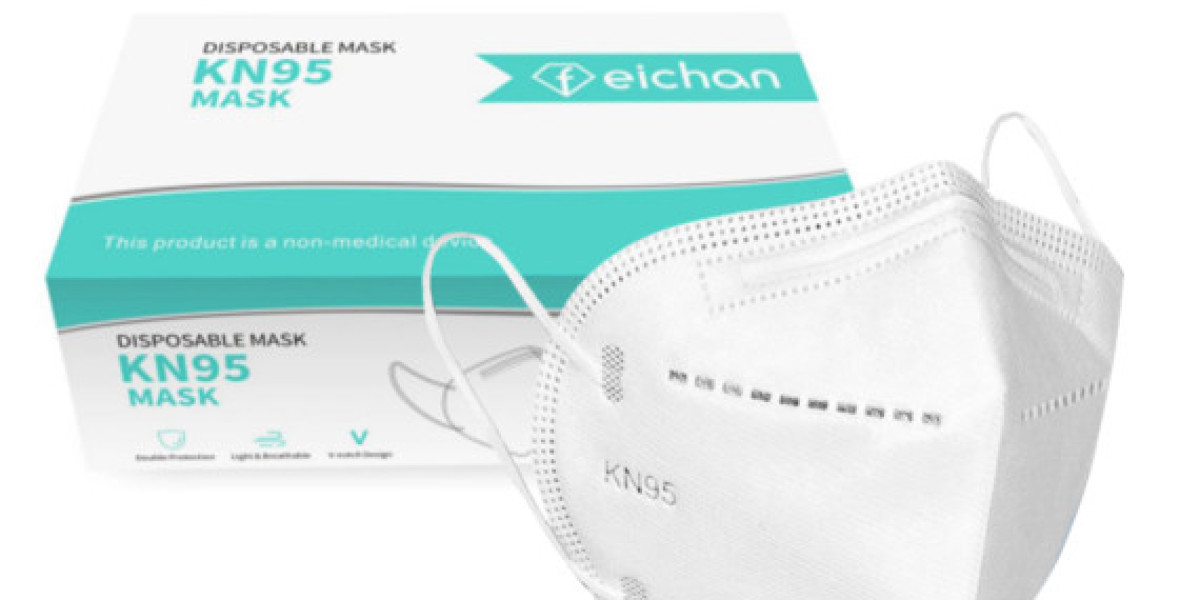KN95 Face Protective Masks are widely recognised for their role in providing adequate respiratory protection. These masks are constructed to filter out a significant proportion of airborne particles, including dust, pollutants, and microscopic pathogens. Designed to fit closely to the face, they create a reliable barrier that reduces exposure to potentially harmful contaminants. The structure of KN95 masks incorporates multiple layers, each serving a specific purpose to enhance filtration efficiency while maintaining breathability. Their importance has been emphasised in various settings, particularly those where a heightened level of protection is necessary. By offering a balance between comfort and functionality, a KN95 face mask has become an essential component of personal protective equipment in different environments. Exploring their features, applications, and proper use highlights their effectiveness in promoting respiratory safety.
Understanding the Filtration Efficiency of KN95 Masks
KN95 masks achieve their high filtration efficiency through a combination of advanced materials and design. Their multi-layered structure includes melt-blown polypropylene, which is effective at capturing particles as small as 0.3 microns. This allows the masks to filter out a minimum of 95% of airborne particles, including fine dust, pollen, and microscopic pathogens.
The filtration mechanism works by utilising electrostatic attraction, which enhances the mask’s ability to trap smaller particles that might otherwise bypass traditional filters. This efficiency is particularly beneficial in environments with elevated exposure to airborne contaminants.
Unlike some other mask types, the KN95 design provides both high filtration performance and a close fit, reducing the risk of air leakage. The ability of KN95 masks to combine fit and filtration ensures they offer enhanced protection in settings where respiratory safety is prioritised.
Materials Used in KN95 Face Protective Masks
The materials used in the construction of KN95 masks are carefully selected to enhance their protective capabilities while ensuring user comfort. Non-woven fabrics form the outer and inner layers, providing durability and softness, while the core filtration layer consists of melt-blown polypropylene. This specialised material is designed to capture fine particles, including those invisible to the naked eye, through a combination of mechanical and electrostatic filtration.
Additional layers may include hot air cotton, which contributes to the mask's breathability and structural integrity. Each layer serves a distinct purpose, working collectively to achieve high filtration efficiency without compromising airflow. The choice of materials ensures that KN95 masks maintain a lightweight and ergonomic design, making them suitable for prolonged use in settings where respiratory protection is critical. These materials underline the effectiveness and reliability of KN95 masks in various applications.
Proper Fit and Adjustment of KN95 Masks
Achieving an adequate seal is critical for the performance of KN95 masks. To ensure a secure fit, the mask should be positioned so that it fully covers both the nose and mouth. The nose clip, typically made of pliable metal, should be carefully adjusted to mould to the shape of the nose, minimising gaps. Straps must be adequately secured around the head or ears, depending on the mask design, to hold it firmly in place without causing discomfort. A well-fitted mask reduces the risk of unfiltered air entering or escaping.
Regularly checking the mask’s position helps maintain its protective capabilities, especially during extended use. Factors such as facial hair or improper strap positioning can affect the seal, highlighting the importance of proper adjustment techniques. Careful adherence to fitting guidelines ensures optimal effectiveness in reducing exposure to airborne contaminants.
Regulations Governing KN95 Masks
KN95 masks are manufactured according to stringent regulatory standards to ensure their performance and safety. In China, the GB2626-2019 standard governs the production of these masks, outlining criteria for filtration efficiency, breathing resistance, and overall fit. These regulations are designed to verify that masks meet a minimum filtration efficiency of 95% for particles as small as 0.3 microns.
Compliance is assessed through rigorous testing procedures to ensure masks provide the intended level of protection. Masks that meet these standards are often marked with the relevant certification, enabling users to identify compliant products.
Adhering to regulatory requirements is essential in distinguishing legitimate KN95 masks from unapproved versions, which may not offer adequate protection. This framework highlights the importance of standards in maintaining the quality and reliability of KN95 masks across various applications and environments.
When and Where to Use KN95 Face Protective Masks
KN95 Face Protective Masks are particularly suited for environments where reducing exposure to airborne particles is essential. Their design allows them to perform effectively in areas with poor air quality, such as during pollution events or in industrial settings. They are widely utilised in healthcare environments, where a higher level of respiratory protection is critical.
KN95 masks are also practical in crowded public spaces, including transport hubs, markets, and gatherings, where maintaining a barrier against airborne contaminants is necessary. Their filtration capabilities make them suitable for scenarios involving proximity to others or a heightened risk of exposure to pathogens. This adaptability highlights their relevance across various applications, prioritising respiratory safety in different contexts.
Difference between KN95 and Other Masks
KN95 masks are distinct from other types of face coverings due to their advanced filtration capabilities and design. Unlike surgical masks, which primarily guard against large respiratory droplets, KN95 masks are designed to filter out at least 95% of airborne particles, including those as small as 0.3 microns. Cloth masks, often made from woven fabrics, offer basic protection but lack the multi-layered filtration system found in KN95 masks.
Additionally, the close fit of KN95 masks minimises air leakage, which is not a feature commonly provided by loose-fitting alternatives. These distinctions make KN95 masks particularly suitable for situations requiring enhanced respiratory protection, demonstrating their effectiveness in environments with a higher risk of airborne contaminant exposure.
Storage and Maintenance of KN95 Face Mask
Proper handling practices are essential to maintain the functionality of KN95 face mask. These masks should be kept in a dry and hygienic environment, away from exposure to moisture, dirt, or direct sunlight. Using a breathable storage container, such as a paper bag, can help protect the mask when it is not in use. The mask's shape and integrity must be preserved, so folding or compressing it should be avoided.
Before reuse, it is essential to inspect for signs of wear, such as damage or compromised straps. Masks that are visibly soiled, damaged, or difficult to breathe through should be promptly replaced. Adhering to appropriate storage and maintenance measures ensures the continued effectiveness of KN95 masks in offering respiratory protection.
Environmental Impact of KN95 Masks
The environmental impact of KN95 masks arises primarily from their single-use design and reliance on non-biodegradable materials, such as polypropylene. When improperly discarded, these masks can contribute to waste accumulation and pose risks to wildlife and ecosystems. The production process also involves the use of energy and resources, adding to their environmental footprint.
Appropriate disposal methods, including adherence to local waste management guidelines, are vital in minimising their impact. Some initiatives are exploring innovations in biodegradable materials and more sustainable production techniques to address these concerns. Awareness of the environmental implications of KN95 masks encourages responsible use and disposal, while fostering developments to reduce the ecological effects of their widespread usage.
Purchasing Genuine KN95 Face Protective Masks
Authenticity is a critical aspect when acquiring KN95 masks to ensure their effectiveness and safety. Genuine masks often display certification marks, such as compliance with the GB2626-2019 standard, to indicate adherence to regulatory requirements. These markings are typically found on the mask itself or its packaging. It is also advisable to purchase from reputable and verified sources to minimise the risk of obtaining substandard or counterfeit products.
Observing the overall quality of the mask, including its material and construction, can offer additional reassurance. Details such as well-sealed edges and properly affixed straps are indicators of reliable manufacturing. Awareness of these factors plays a significant role in selecting genuine KN95 masks, ensuring their intended protective performance is maintained.
Comfort and Wearability of KN95 Masks
KN95 masks are designed with features that enhance both comfort and wearability, making them suitable for extended use in various environments. Their lightweight construction and soft inner layers help reduce irritation, allowing for prolonged wear without significant discomfort. Adjustable straps are often incorporated to provide a secure yet customisable fit, accommodating different face shapes and sizes.
Additionally, the mask’s ergonomic design ensures it sits snugly against the face, minimising pressure points and discomfort during use. Proper breathability is another essential aspect, as the materials used in KN95 masks are crafted to balance filtration efficiency with airflow. These considerations contribute to a practical design that prioritises user comfort while maintaining the protective functions necessary for respiratory safety.
Long-term Use of KN95 Face Protective Masks
KN95 masks are primarily intended for single-use, but their usability can be extended in specific controlled environments if the mask remains clean and undamaged. Factors such as exposure to moisture, contaminants, or physical wear significantly influence their longevity. Safe reuse involves proper storage in a dry, breathable container to avoid contamination.
It is essential to monitor the mask’s condition, replacing it immediately if its fit is compromised, airflow is restricted, or visible damage is present. Prolonged use should always prioritise maintaining the mask's filtration and structural integrity to ensure consistent protection in environments requiring enhanced respiratory safety.
Conclusion
A KN95 Face Mask is an indispensable personal protective equipment, offering superior respiratory safety across medical, industrial, and public settings. Their effectiveness hinges on a multi-layered design, featuring melt-blown polypropylene, which achieves at least 95% filtration efficiency for airborne particles. Crucially, a proper seal, ensured by adjusting the pliable nose clip and secure straps, is essential for optimal performance and compliance with the GB2626 standard. By balancing high filtration with wearability, and by adhering to proper storage and usage guidelines, KN95 masks play a key role in reducing exposure to contaminants and safeguarding public health.
Frequently Asked Questions
How is the 95% filtration efficiency in KN95 masks achieved?
The 95% filtration efficiency is achieved through a multi-layered structure, primarily featuring an inner layer of melt-blown polypropylene. This specialised material uses electrostatic attraction in addition to mechanical means to capture airborne particles as small as 0.3 microns, ensuring a reliable barrier against a wide range of contaminants.
What is the most critical factor for ensuring a KN95 face mask provides effective protection?
The most critical factor for ensuring a KN95 face mask provides effective protection is ensuring a proper, secure seal around the face. If the mask does not fit closely, unfiltered air can enter or exit around the edges, compromising the filtration capability. This is achieved by carefully moulding the metal nose clip to the nose's shape and ensuring the straps are secured to eliminate gaps.
What are the main differences between a KN95 mask and a standard surgical mask?
The main differences lie in filtration efficiency and fit. KN95 masks are designed to filter a minimum of 95% of very fine airborne particles, while surgical masks are primarily designed to block large respiratory droplets. Furthermore, KN95 masks are designed for a tight facial seal, whereas surgical masks are typically looser-fitting.
What are the recommended practices for safely storing and maintaining a KN95 mask between uses?
The recommended practice for storage is to keep the mask in a dry, hygienic environment, ideally in a breathable container such as a paper bag. The mask should never be folded, compressed, or exposed to moisture or direct sunlight. Users must inspect the mask before reuse, replacing it immediately if it is visibly damaged or soiled.
What regulation governs the production and performance standards for genuine KN95 masks?
The production and performance of genuine KN95 masks are governed by the Chinese standard GB2626-2019. This regulation mandates that the masks must meet a minimum 95% filtration efficiency for airborne particles, as well as specify requirements for breathability, structural integrity, and overall fit.
Related Business Listings |










